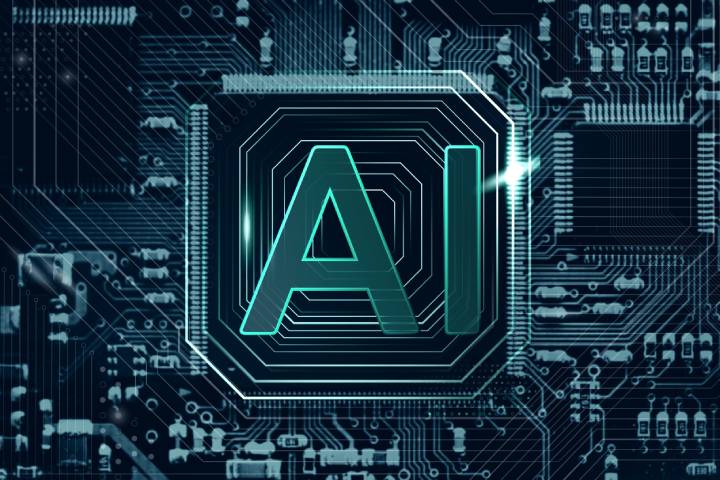How To Optimize Quality Control Through AI

That companies are launching into the technological transition is nothing new. The optimization of costs and processes is one of the most important factors to compete in the market, and companies are joining this trend. In this situation, AI (Artificial Intelligence) is postulated as the best option to improve the quality control system.
AI allows them to be detected predictively, that is before they occur. Thanks to this technology, companies can anticipate errors with a quality detection system that monitors the process in real-time with a high level of precision. This way, if the system identifies a faulty item, it can automatically remove it, before it affects later stages of the process. Thus, companies save costs and time.
Table of Contents
AI And Quality Control In Companies
The quality and inspection phase is one of the most important in any manufacturing process since it is the one that guarantees that the level of the products is optimal. Artificial Intelligence can play a key role in this phase since, as already mentioned, it allows processes to be automated and failures to be predicted.
However, according to a study, many companies are not able to implement AI in their quality control processes. 43% of those surveyed maintain that it is due to a clear absence of an AI strategy and 42% to a lack of specific talent to implement it.
AI is not new, but not all companies get access to it, only 7% of companies use AI systems for quality control. Furthermore, those companies that do use AI focus on 4 use cases: Machine Learning, Big Data, Virtual Assistants, and Virtual Language Processing. However, its possibilities are enormous.
Helping Companies Optimize Their Quality Controls Through AI
Given the difficulties to start this technological transition, some companies seek to help their clients to achieve it successfully. Thanks to our experience, we help companies implement technological solutions to move towards digitization.
In addition to implementation help, we host webinars to share our knowledge and experience in working with customers. And, this is the case in the webinar How Applied AI can help you optimize your quality controls. In which our Applied Artificial Intelligence team explains how AI is incorporated into industrial processes, as well as the operation and the most relevant applications of this technology.
Within the different branches of AI, this webinar focuses on artificial vision and its application in production quality control. No matter what level of knowledge you have about this technology. Normally the audience we have either understands the concept, but has no experience in its implementation.
Artificial Vision In Quality Control
Artificial vision, applied to quality control, focuses on three aspects: inspection of parts, detection of defects, and process traceability. Until a few years ago, the companies that could apply artificial vision in their production were limited. However, with the growing monetization and democratization of technology and tools, more and more companies are committed to implementing it.
Because right now? For three fundamental factors:
- Reducing hardware cost and installation complexity. Currently, almost all companies can access AI to apply it to their quality controls. Also SMEs.
- The rise of data. AI needs data to function. The more data you have about the business object, the more accurate your model will be.
- The increase in computational capacity and the creation of new models. In the last 10 years, the improvements in the algorithmic part have been remarkable. The cloud is evolving and, with it, its computing capacity. In addition, some pre-trained models allow you to achieve better results with a pay-per-use method.
AI Applied To Quality Control In The Textile Sector
Use cases in addition, concerning inference, they are dedicated to training operators and monitoring the model to ensure its correct operation.
To implement the artificial vision in the specific case that José Alberto is talking about, our team had to meet several customer requirements. To begin with, in the first phase of data collection, the client did not have the internet. We had to get data in near real-time.
- To solve the lack of internet access, an external memory was used so that the operator could collect the visual inspection of the product, first in video, frames, and screenshots, and then with an endoscope camera. These tools made it possible to streamline the data collection process.
- Concerning inference, and to prevent the operator from wasting time in front of the camera, image processing times were cut. In addition, the same operator could see on the computer, in real-time, if the riveting was correct. At this point in the process, the internet was already available, so the images were uploaded to the cloud to verify that the process did not lose quality over time.
The Architecture Of Quality Control
Continuing with the same example to implement AI to help optimize your QA system, we work with an architecture based on Azure. These tools were Container Registry and IoT Edge Runtime, an application installed on each computer to be in permanent connection with the container. Connected to the IoT Edge through the cloud, we use the IoT Hub platform to send information and monitor the process.
AI In Quality Controls In Different Sectors
Beyond the textile sector, AI-optimized quality controls can be developed in other industries. Tires, high voltage towers, nuts. The applications are endless and the mission of this webinar is for them to leave with ideas for future applications. For example, in the case of tires, companies analyze them to see if they have defects. The analysis is manual, it is not carried out on 100% of the production, but a survey control is established.
Also Read: 5G Technology And Photovoltaic Roofs Proposals To Create The Road Of The Future
